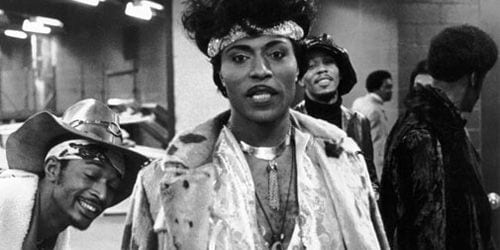
While bluesmen like Muddy Waters, B.B. King, and Howlin’ Wolf enjoyed resurgences, the late ’60s were considerably less kind to rock ’n’ roll pioneers. As such performers were usually relegated to oldies revues, their music was scorned by many baby boomers, who preferred “serious” music with a message to more fun, traditional rock ’n’ roll. But the old guard wasn’t going down without a fight. Similar to Muddy and Wolf, Bo Diddley got funky, even psychedelicized. Link Wray dropped the raunchy distortion and went back to the country. Chuck Berry mingled with hippies, recording an album with the Steve Miller Band and often letting youngsters play in his backing band. And in 1970, Little Richard released The Rill Thing, an album his new record label, Reprise, described as a “comeback.”
But it really wasn’t. After stepping away for a flirtation with the ministry in the late ’50s, Richard Penniman had been back for years, cutting solid (though commercially unsuccessful) sides for labels like Vee-Jay and OKeh — all the while maintaining the flamboyant, energized personality that made his ’50s hits so great. But with the public losing interest, Richard was in danger of artistic irrelevance — a reality he faced head-on with The Rill Thing.
As an attempt to update his sound to a contemporary audience, The Rill Thing is at least partially successful. Recorded and self-produced in Muscle Shoals, the album retains Richard’s forceful singing, but augments it with bluesy, funky soul rather than his trademark manic R&B. “Greenwood, Mississippi” and “Spreadin’ Natta, What’s the Matter?” are particularly noteworthy in that regard, rocking along with greasy Southern funk grooves that Richard adapts his vocals to quite well. Another in that vein, “Freedom Blues”, also includes a hip message of universal brotherhood and became a minor hit. The latter was cowritten with protege Esquerita (misidentified on the original cover as “Esgrita”), who also did the original version of “Dew Drop Inn”, another Richard/Esquerita collaboration that’s a more traditional Little Richard rocker in this rendition — and that wittily excerpts the drum beat from “Keep a Knockin’” for its intro.
So far, so good, but The Rill Thing loses the plot somewhat with a 10-minute instrumental title track that goes nowhere and a surprisingly ineffectual remake of a song Richard helped inspire, “I Saw Her Standing There”.
Covers were even more dominant on 1971’s King of Rock and Roll, where Richard remakes various current hits, plus two country numbers. Even by early ’70s standards, covering “Joy to the World”, “Brown Sugar”, and “Dancing in the Street” is unimaginative — and even though Richard’s personality ensures that they’re at least credible, they’re the kind of thing that might make a decent impromptu cover during a live show, not something to base an album on. (Note: In an uncharacteristic lapse, annotator and ’70s fanzine legend Gene Sculatti incorrectly says that another cover, “The Way You Do the Things You Do”, was by the Miracles — but it was the Temptations, although two Miracles wrote it.) But the version of “Born on the Bayou” is spirited, even inventive with its funkified rearrangement. Similarly, the dirty funk groove of “Green Power” shows that the reinvented Mr. Penniman may have found his niche.
Indeed, it was that type of funk that dominated The Second Coming in 1972, unquestionably the finest of Little Richard’s three Reprise albums. Reunited with Bumps Blackwell, who produced his classic Specialty sides, Richard gets the added boost of New Orleans session hotshots like Earl Palmer (drums) and Lee Allen (sax), bangs the ivory with a knowing verve, and locks into a rock-solid New Orleans funk groove that equals what Crescent City legends like Lee Dorsey, the Meters, and Willie Tee were doing at the time. “Nuki Suki”, “Second Line”, and “It Ain’t What You Do, It’s the Way How You Do It” are standouts in that regard, but Richard also finds time for a more rocking number called “Rockin’ Rockin’ Boogie”, and even excels on something that was elusive two albums earlier, the long jam: “Sanctified, Satisfied Toe-Tapper” is seven minutes of funky bliss.
Little Richard was really back this time, and not ready for rock ’n’ roll revivals by a long shot. But other than Dr. John’s brief flirtation with the national spotlight a year later with “Right Place Wrong Time,” even the best ’70s New Orleans funk never sold well — and alas, Little Richard was no exception.
